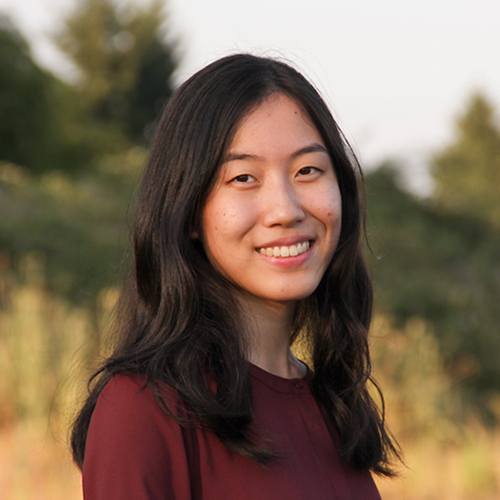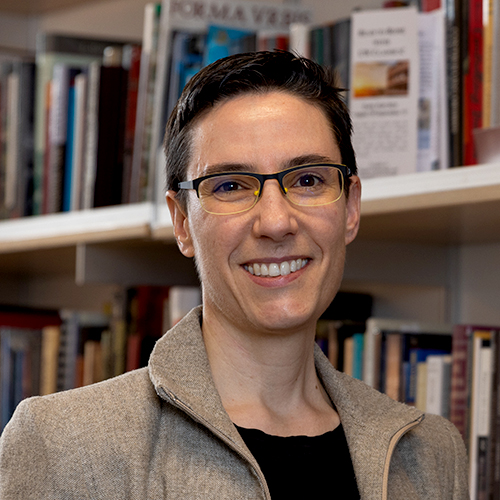At the new Montlake branch of the Seattle Public Library, five circles of light, each a different color, dance down the walls and move onto the floor in the morning, then move across the room as the day goes on. The light show is an artwork by Rebecca Cummins, UW associate professor in the School of Art, and it isn’t just decorative. One of those circles of light is the “nodus,” or time indicator for the Aperture Skylight Sundial.
The circles are actually projections, the result of five circular apertures cut into the building’s ceiling. Each aperture is filled by a different color of glass, and the sun shining through the glass produces the projections. Four apertures are filled with shades of blue, green and purple. The fifth, which is orange, tells the time. More specifically, it indicates solar noon from March to October.

Cummins, whose work often focuses on light, has co-taught a sundial course at the UW with Astronomy Professor Woodruff Sullivan (whom she acknowledges as a key adviser on the library project). She says she was motivated to create the Montlake Library sundial when she placed a model of the new building on a heliodon, a “sun machine” that simulates the sun’s path for various times of day and year.
“Being able to observe how the light would move through the building was informative and inspiring,” she says. “I often do work that is very site specific and experiential. If this building was on another angle, or in a different location, the piece would look different. This is specific to Montlake Library.”
But there is some precedent for it. Cummins has visited churches in Europe in which astronomers in the 17th and 18th centuries installed aperture sundials with bronze inlays on the floor to indicate solar noon.
An explanation of the library art is provided on a plaque on the wall, with further information available in a binder at the counter. On the summer solstice, colorful circles of light will move from the lobby to the wall of the staircase that leads to the west entrance over the course of a day. And they’ll move inexorably northward as the days advance until just after the fall equinox, after which they will be blocked by ceiling beams. They will reappear in the spring, a powerful portent of the longer days ahead.
“I enjoy the idea that this is here, quietly moving,” says Cummins. “I’ve seen people walk in and say, ‘Wow, what’s that? How does it work?’ It is satisfying to hear their responses.”
More Stories

All the World's a Stage — and a Game
Students in DRAMA 480 learn how techniques used in game design can be adapted for interactive theater productions.

Two Majors, Complementary Skills
Elizabeth Xiong (2024), a double major in art history and computer science, shares how she gained different and complementary skills from each major.

Lifting Marginalized Voices — from Ancient Rome
"Interesting, frustrating, and necessary,” is how Sarah Levin-Richardson, professor of Classics, describes her research into the lives of enslaved individuals in the ancient world.